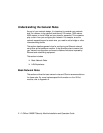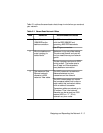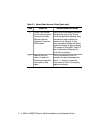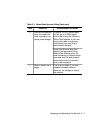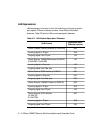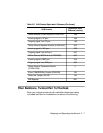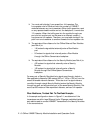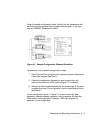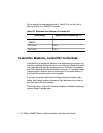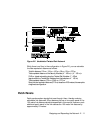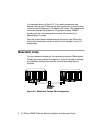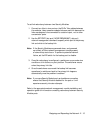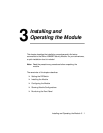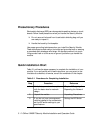
Designing and Expanding the Network 2 - 9
Using the sample configuration below, identify the two transceivers that
are likely to be the greatest fiber equivalent distance apart. In this case,
they are 10BASE-T Transceivers A and B.
Figure 2-1. Sample Configuration Distance Calculation
To determine if your network configuration is legal:
1. Use 4.2 km (4200 m) since this is the maximum network diameter for
a pure fiber network (see Rule 3).
2. Calculate the equivalent distances for each concentrator, and
subtract the totals from 4200 (refer to Figure 2-1 for details).
3. Subtract all cable lengths between the two transceivers. If the result
is greater than zero, the configuration is within legal Ethernet limits
(see Rule 5).
For the configuration shown in Figure 2-1 to work, ensure the fiber
equivalent distance between transceiver A and transceiver B is less than
4200 meters. As the calculation illustrates, 1560 meters remain for
expansion in this configuration.




